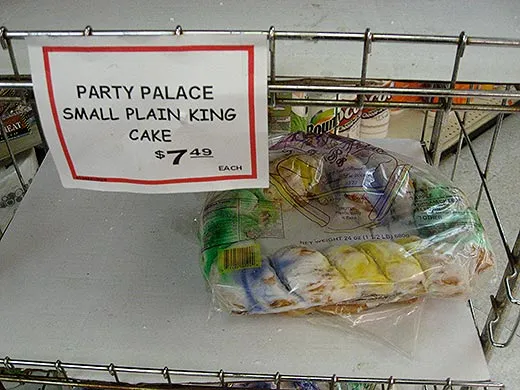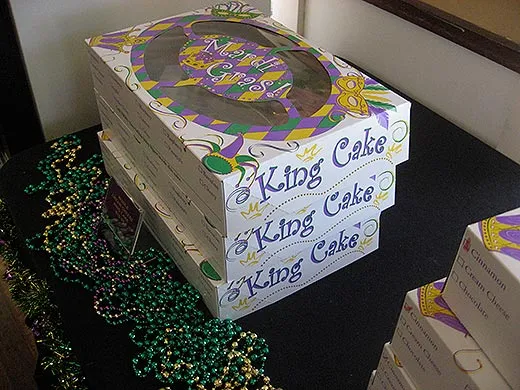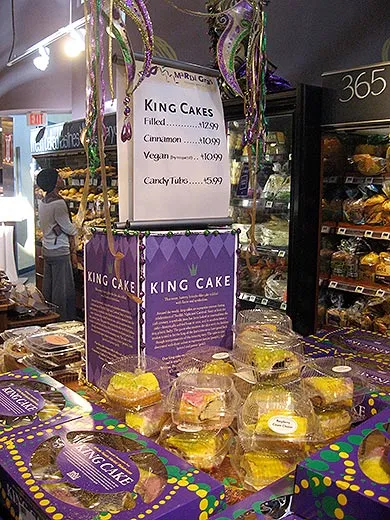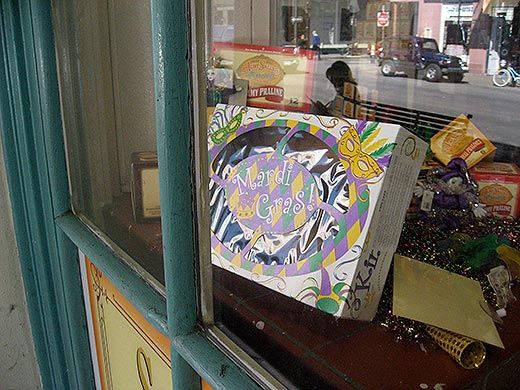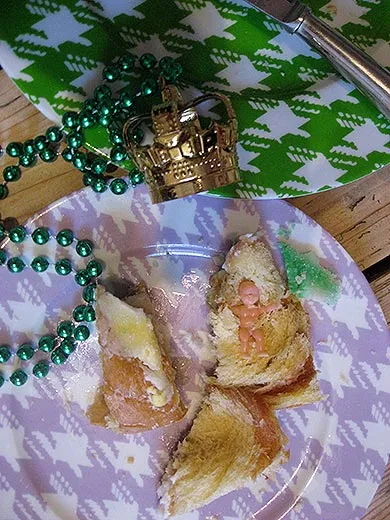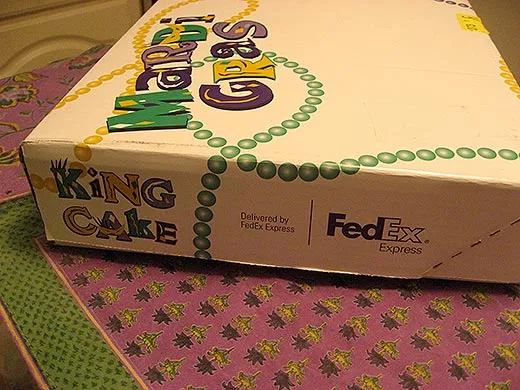A King Cake Special Delivery
One can’t truly celebrate a New Orleans Mardi Gras without the doughy delicacy
/https://tf-cmsv2-smithsonianmag-media.s3.amazonaws.com/filer/king-cake-mardi-gras-631.jpg)
Worrying about possibly choking on a pink plastic baby hidden in your cake is not your average worry when contemplating dessert, but then nothing surrounding Mardi Gras in New Orleans is quite average. This particular dessert—with the ensconced plastic baby—is the Mardi Gras classic: the king cake. Though Mardi Gras comes directly before Lent, the season which precedes the Christian holiday of Easter, king cake history is not based on Easter tradition, but Christmas tradition. The “king” in king cake refers to the three kings or wise men who visit Jesus upon his birth. That holiday is called the Feast of the Epiphany, Twelfth Night, or (more appropriately for our confection) King’s Day, and is celebrated on January 6, which kicks off the carnival season in New Orleans, peaking on Fat Tuesday.
It is said that French settlers to Louisiana brought with them the king cake custom. It was originally a yeast dough, something like brioche, with a light icing or coating of sprinkled sugar. Today king cake dough can be anything from classic brioche dough to dense, sweet, Danish pastry-like dough, swirled with cinnamon and nuts. Sometimes the dough is lightly flavored with lemon zest. Included in the contemporary king cake repertoire, are filled king cakes. The fillings include vanilla or chocolate custard, fruit fillings, or sweetened cream cheese. The cake is baked in an oval ring shape, like a crown. The dough is often braided or twisted. The icing of the king cake varies from thick, white, sugary icing, to light lemon-flavored glazes. One thing that does not vary—the icing sports the three traditional colors of Mardi Gras: purple (symbolizing justice,) green (faith,) and gold (power.)
As with the British tradition of baking silver coins or thimbles into Christmas plum pudding, the cake originally baked in a coin, bean, pea, or nut as the “prize” inside the cake. Today, a plastic baby (representing the baby Jesus) is baked into the dough. In the late 1800s, the “King” and “Queen” of Mardi Gras were chosen by whose piece of cake included the prize. Today, it is still considered good luck to draw the prize in the cake. The one who draws the prize is responsible for either throwing the next king cake party, or at the very least, buying the next cake to keep the partying—and the feasting—going.
In New Orleans, the king cake business is big business, and there is a version for every taste and budget. While in New Orleans in February, my friend Katy purchased one for me to taste. She purchased it at her local grocery store, Langenstein’s, but there were king cakes to be had just about everywhere. But I had to try it again this week in honor of Fat Tuesday, and fortunately many others have the same idea: one vendor uses custom king cake Fedex boxes for shipping. Our photo gallery tells a bit of our king cake journey in New Orleans, and back at home.
Planning Your Next Trip?
Explore great travel deals
Smithsonian magazine participates in affiliate link advertising programs. If you purchase an item through these links, we receive a commission.
